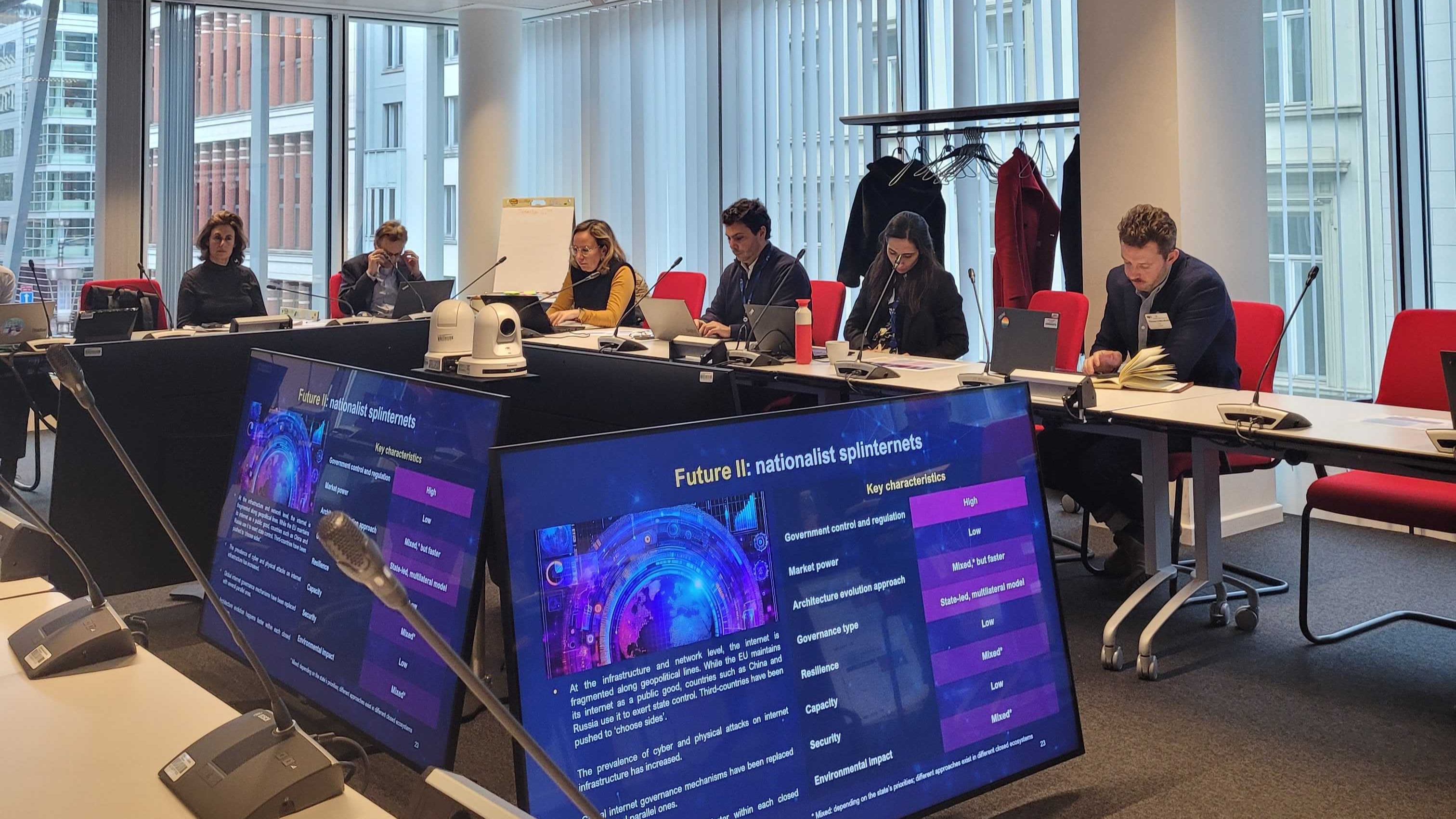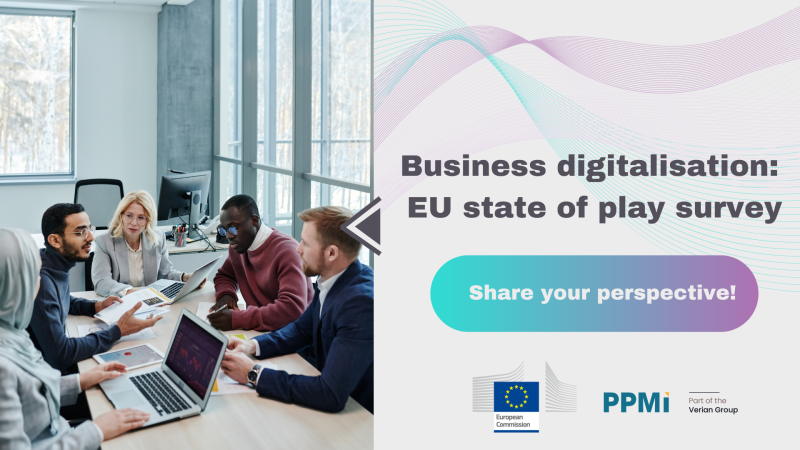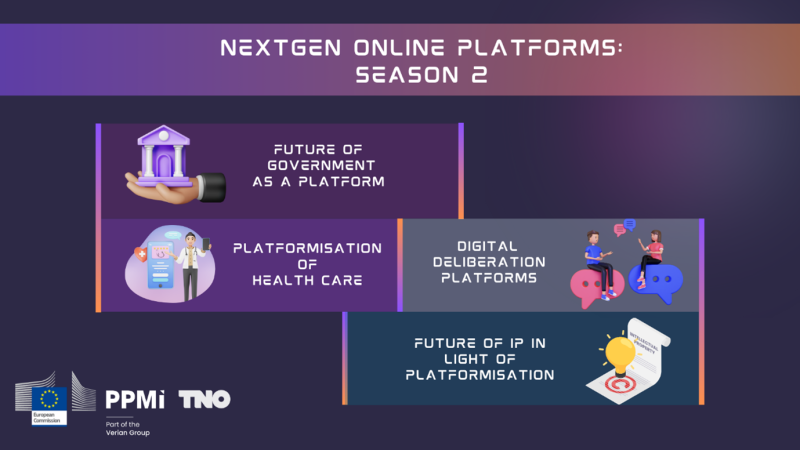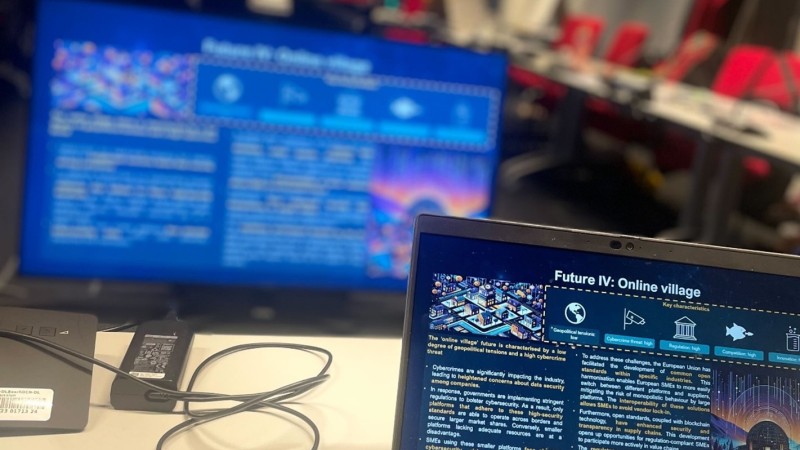On 13 December, PPMI, in collaboration with TNO and the European Commission, organised the event 'NextGen Online Platforms: Foresight Session on the Future of the Internet’ in Brussels, Belgium. The event brought together policy makers, leading experts and practitioners to discuss the challenges and opportunities of the internet in 2035.
Focus on the physical and network layers of the internet ecosystem
The success of an open internet is based on its decentralised architecture, stable and open standards and protocols, multi-stakeholder governance and the integration of respect for democratic values, principles and fundamental rights in its operation.
The foresight session focused on two interconnected layers of the internet ecosystem:

Together, these layers comprise the bottom layers of the internet ecosystem. Due to their technical nature, the future evolution of internet infrastructure and network layers is both underexplored and relatively inaccessible to non-specialist audiences despite the significant implications its development could have on broader society.
Why is the future of the internet important?
The evolution of the infrastructure and network layers of the internet could have wide-ranging implications for the broader economy and society, for example:
- Connectivity and network performance, which may have cascading effects on our ability to effectively use new technologies, such as artificial intelligence (AI), as well as the advancement of web 3.0 and 4.0 and network resilience against various threats in the form of natural disasters (e.g. large earthquakes, tsunamis, solar superstorms, underwater landslides) or human activities.
- Security: accumulating technical debt associated with the insufficient take up of critical standards and protocols updates exposes the internet to a number of weaknesses and vulnerabilities.
- The environment: the evolution of the internet and related technologies, such as blockchain, cloud and AI, could exacerbate environmental challenges. At the same time, technological breakthroughs and incentives (regulatory or corporate) for energy efficiency and the reduction of greenhouse gas emissions and e-waste could be used to counterbalance this effect.


Sources: Statista, Internet Resilience Index, Internet Society Technology Pulse
Foresight session approach
During the session, participants were tasked with identifying the key risks and opportunities associated with virtual worlds in 2035. To do so, experts were invited to use ‘futures’, a narrative foresight tool describing possible worlds in 2035. The four virtual worlds futures used during the session were:
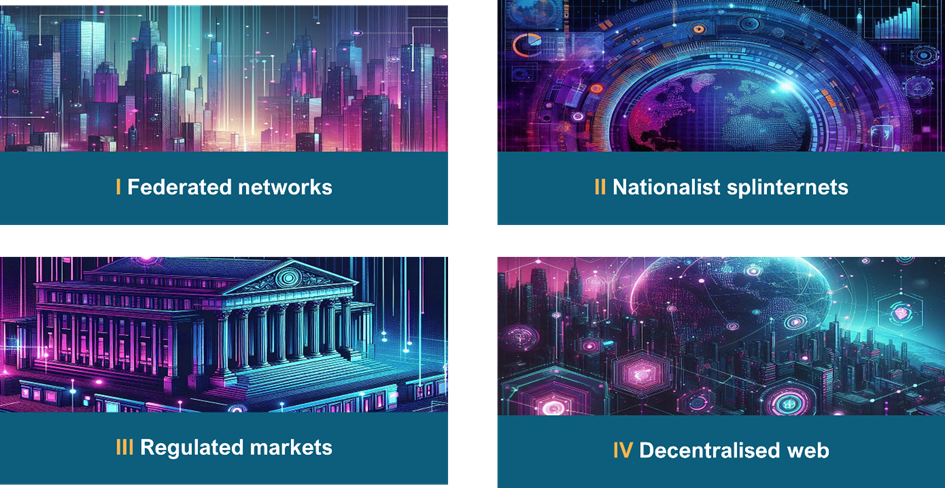
- Federated Networks: a future where content and application providers (CAPs) hold a large market share in the internet infrastructure space, effectively controlling multiple layers of the internet ecosystem. Companies have created federated networks (so-called ‘walled gardens’).
- Nationalist Splinternets: a future where the internet has become fragmented at the infrastructure and network level along geopolitical lines. Sates use the internet to exert control over information flows.
- Regulated Markets: a future where policy makers regulate technology to balance market growth with societal and environmental priorities.
- Decentralised Web: a future where web 3.0/4.0 technologies have advanced and gained mass acceptance. Governments and corporations have limited control over the internet, while individuals are empowered.
Participants worked in groups to identify and prioritise the most important challenges and opportunities for the EU in each future using macro and micro perspectives. When analysing the macro perspective, each group mapped challenges and opportunities from the perspective of policy makers.
Then, the identified challenges and opportunities were validated through exploring the perspectives of personas. Personas are illustrative descriptions of imaginary people and organisations commonly used in design thinking and foresight. Personas allow to explore the futures from many different perspectives and seek commonalities and differences between stakeholders. The result of the micro analysis was then used to validate and fine-tune the output of the macro-level analysis done previously.
Foresight session results
The outcome of the foresight session was a set of challenges and opportunities linked to each of the futures explored. Some cross-cutting themes included:
- Business implications from the future evolution of the internet, such as influence on global supply chains, investment and innovation.
- Market dynamics implications, such as the potential for power concentration or the creation of a level-playing field.
- Geopolitical implications and implications for EU competitiveness.
- Accountability, security and users’ rights and protection on the internet.
- Various regulatory and policy-making implications.
The highest priority risks and challenges identified in each future are summarised below.
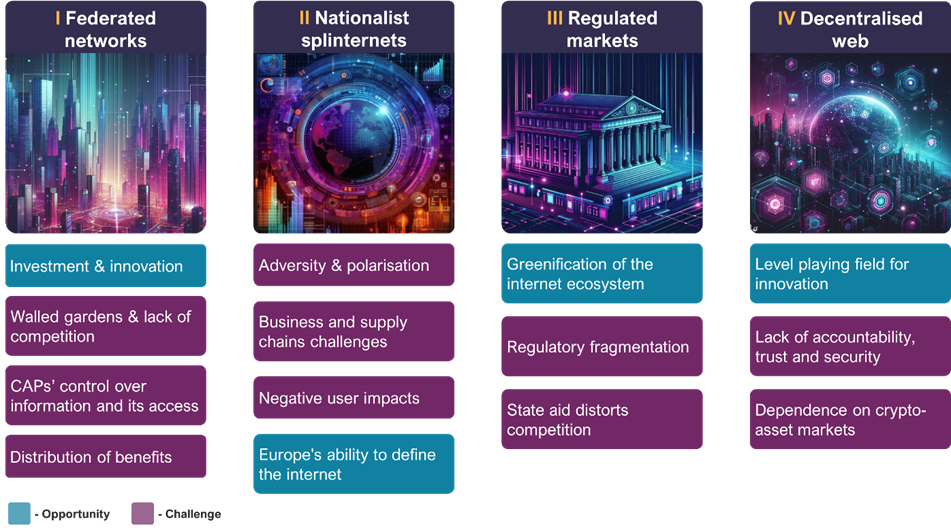
Learn more about the study
The event was part of a study carried out by PPMI and TNO for the European Commission, which examines the development of online platforms and their impact on European society and economy. You can find out more about the study here.
Throughout the study, the team is engaging a wide range of stakeholders in co-creation and co-assessment exercises to uncover different future scenarios and their implications. This event is part of a series of participatory sessions with different stakeholders, including policy makers, industry, academia and youth.
The results of this foresight session will feed into a paper on the future of the internet to be published in 2024. It will be one of ten foresight papers developed during the study.
If you would like to join our mailing list or get in touch with the study team, you can always contact them at foresight@ppmi.lt.
